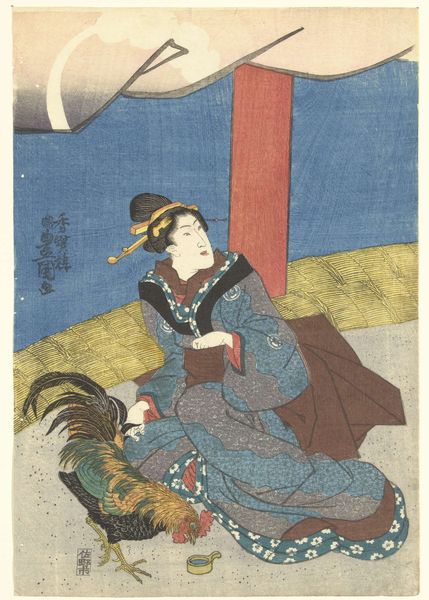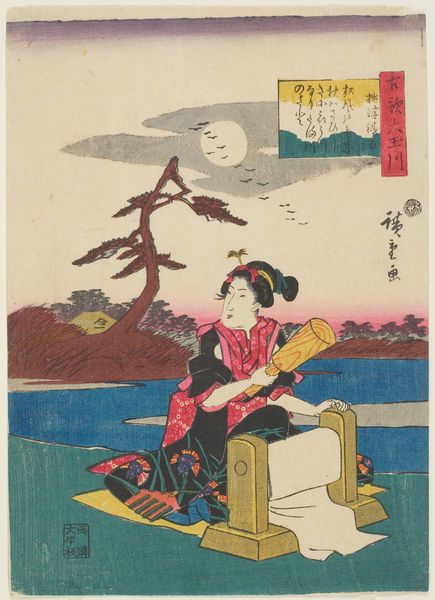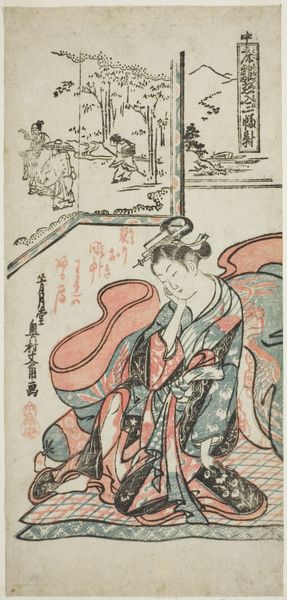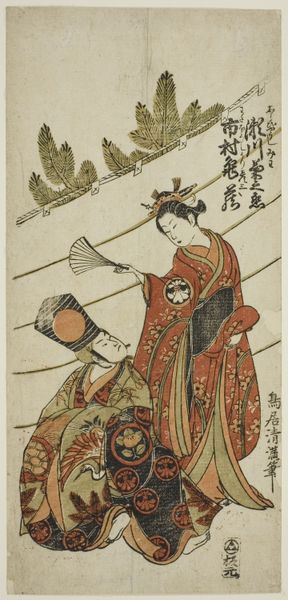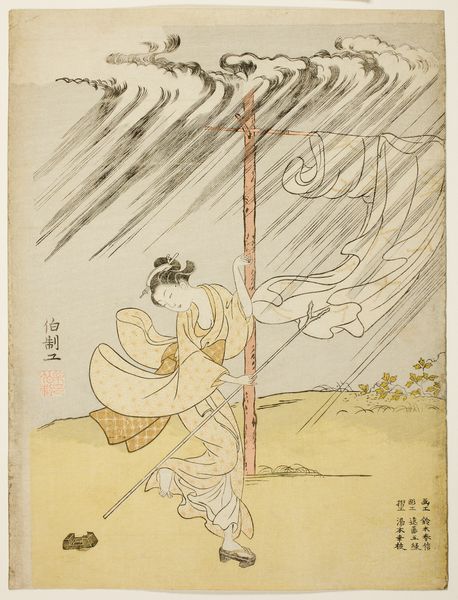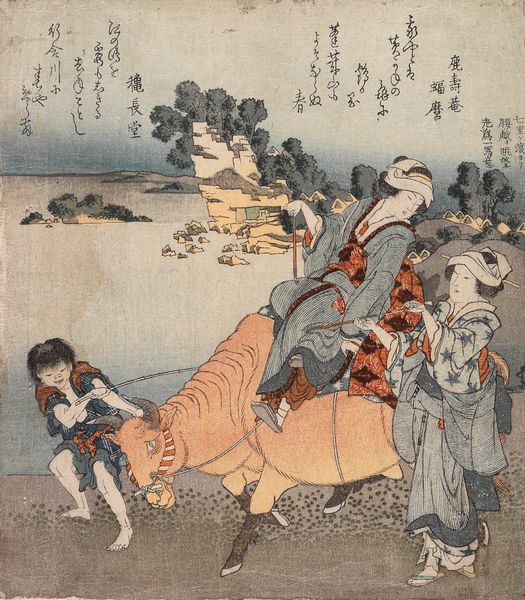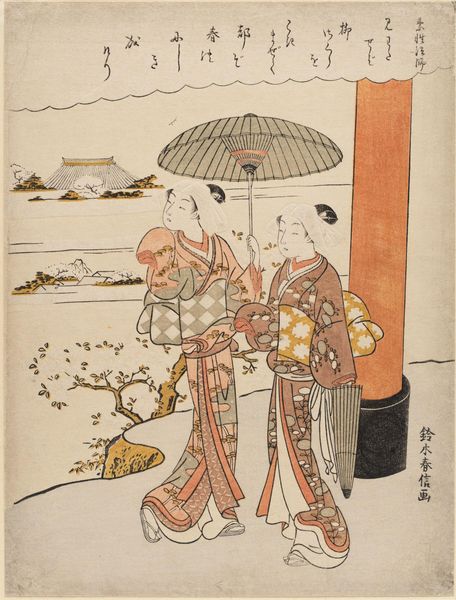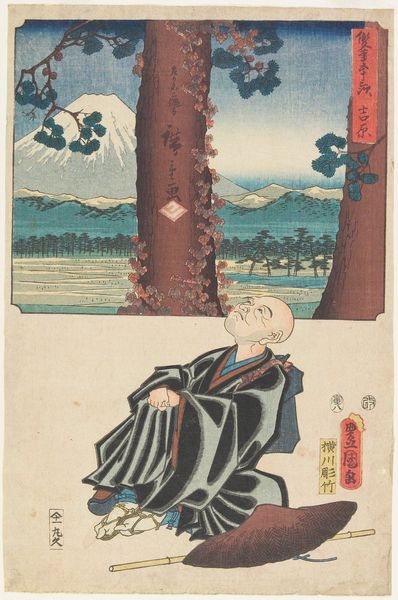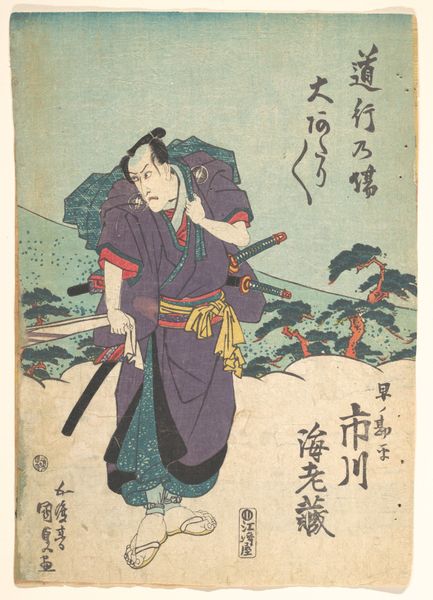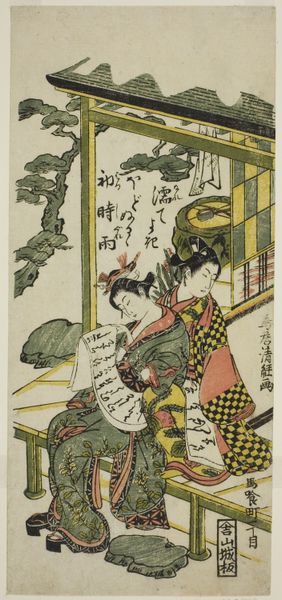
print, ink, woodblock-print
#
water colours
#
narrative-art
#
ink painting
# print
#
asian-art
#
landscape
#
ukiyo-e
#
figuration
#
ink
#
coloured pencil
#
woodblock-print
Dimensions: 14 1/2 × 4 3/4 in. (36.9 × 12 cm) (image, sheet, chūtanzaku)
Copyright: Public Domain
Editor: Okay, next up we have "The Kinuta Jewel River in Settsu Province," a woodblock print from around 1835 by Utagawa Hiroshige, currently at the Minneapolis Institute of Art. It depicts two women on a riverbank. The tones are so muted; the composition feels almost dreamlike. What strikes you most about it? Curator: It’s interesting how Hiroshige, despite working within the commercial framework of Ukiyo-e prints, manages to convey a sense of quiet intimacy. Consider the role prints played in 19th century Japan – circulating images and ideas amongst a growing urban audience. What can we infer about the lives, aspirations and even leisure activities of these consumers, based on scenes like this? Editor: So, the print itself wasn’t necessarily intended as ‘high art’? It’s more about accessibility? Curator: Precisely. Prints offered a window into different regions, cultural practices, and social scenes, often reinforcing dominant ideologies but also, subtly, offering alternative perspectives. This print, part of a series showcasing scenic locations, promotes a certain image of leisure and travel that would appeal to a specific demographic. Who do you think it would appeal to and why? Editor: Well, I guess people who were actually able to travel or at least dreamt of it. And, perhaps, those who appreciated images of traditional womanhood. Curator: Exactly. Also, look at how the women are placed within the landscape – nature isn't just a backdrop, but an active element shaping their experience. What does this relationship tell you? Editor: I hadn't really thought about it. I suppose it highlights how people are connected with their environment? How images of leisure or of everyday people can convey ideas about nationhood and cultural values? Curator: A wonderful point. That interplay is precisely where much of the political power of such seemingly innocent images resided. Editor: This gives me a fresh perspective. Thank you!
Comments
No comments
Be the first to comment and join the conversation on the ultimate creative platform.

